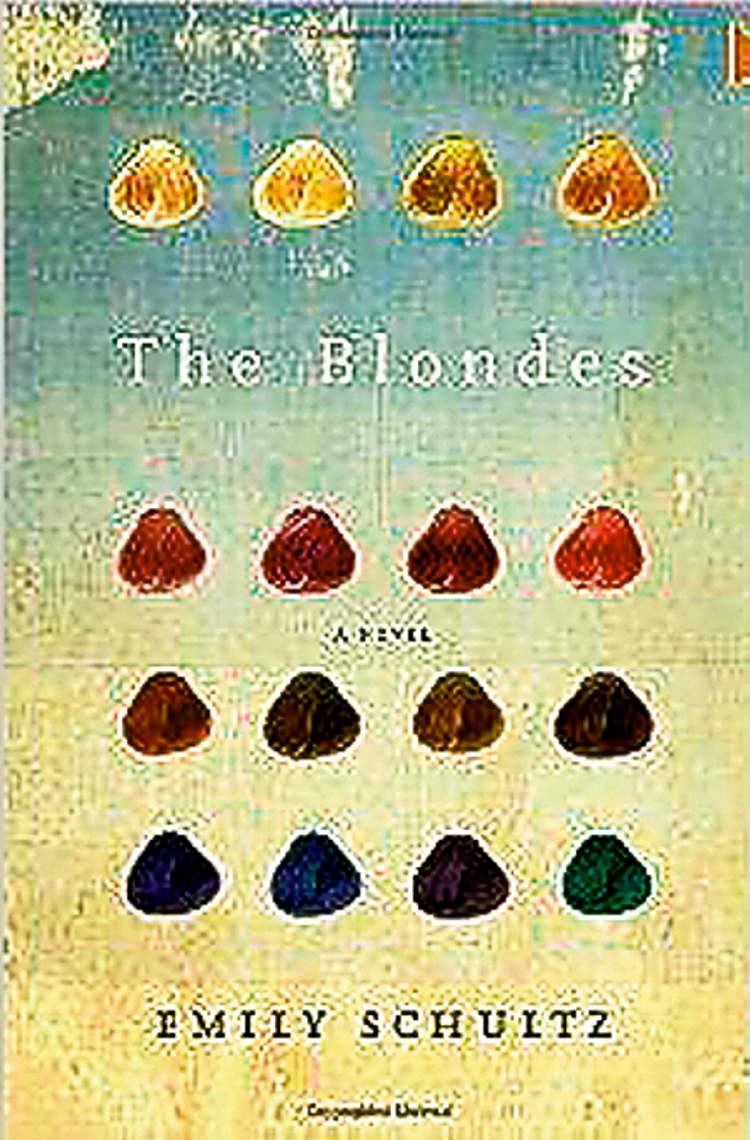Look out! There’s a blond woman behind you!
Advertisement
Read this article for free:
or
Already have an account? Log in here »
To continue reading, please subscribe:
Monthly Digital Subscription
$0 for the first 4 weeks*
- Enjoy unlimited reading on winnipegfreepress.com
- Read the E-Edition, our digital replica newspaper
- Access News Break, our award-winning app
- Play interactive puzzles
*No charge for 4 weeks then price increases to the regular rate of $19.00 plus GST every four weeks. Offer available to new and qualified returning subscribers only. Cancel any time.
Monthly Digital Subscription
$4.75/week*
- Enjoy unlimited reading on winnipegfreepress.com
- Read the E-Edition, our digital replica newspaper
- Access News Break, our award-winning app
- Play interactive puzzles
*Billed as $19 plus GST every four weeks. Cancel any time.
To continue reading, please subscribe:
Add Free Press access to your Brandon Sun subscription for only an additional
$1 for the first 4 weeks*
*Your next subscription payment will increase by $1.00 and you will be charged $16.99 plus GST for four weeks. After four weeks, your payment will increase to $23.99 plus GST every four weeks.
Read unlimited articles for free today:
or
Already have an account? Log in here »
Hey there, time traveller!
This article was published 18/08/2012 (4855 days ago), so information in it may no longer be current.
Blonds have more fun, the saying goes, but not in Canadian Emily Schultz’s quasi-dystopian new novel, where fair-haired females, whether dyed or natural, suddenly succumb to a mysterious affliction that turns them into crazed, violent attackers.
Hazel Hayes is a communications grad student living in New York City when she discovers she’s pregnant — the father, Karl, is her thesis adviser, who is not only kind of a self-involved jerk, but married to boot.
The Brooklyn-based Schultz, whose most recent novel, Heaven Is Small, was short-listed for Ontario’s Trillium Prize, uses the narrative device of Hazel telling the story of the plague and its aftermath to her unborn child — variously addressed as “my little grub” or “my little remora.”

She finds out she’s with child at the same time that what comes to be called Siphonaptera Human Virus, or Blonde Rabies, first rears its bleached and batty head — she witnesses the first attack, when a well-dressed executive with “Barbie-blond hair” lumbers oddly across the subway platform, headbutts a teen girl and pushes her onto the tracks.
As the panic builds, elements of misogyny come to the forefront: men are instructed to watch for signs of SHV in women that include limping, raised voices, violent actions or “displaying a downturned expression.”
“We’re not allowed to have downturned expressions?” a blond woman asks Hazel. “What if we’re just worried? In a bad mood? PMS?”
Women become somewhat equalized in the wake of SHV, as they all shave their heads or dye their hair dark.
Hazel’s thesis (perhaps too conveniently) is about what women look like and what we think they look like. Its title is Through a Screen Darkly: Vamps, Tramps and False Consciousness in Female Marketed Culture, and it gives Schultz the opportunity to talk about our attitudes toward beautiful women (there’s an interesting aside on why the movie industry moved from sultry “ethnic” brunettes to the Hollywood standard of icy blond leading ladies).
Hazel herself is a flaming redhead who dyes her hair brown, citing statistics gleaned in her esthetology research that 80 per cent of people dislike red hair.
But that can’t save her when she tries to cross the border back to Canada, where she was born. Red hair is considered on the spectrum of blond, and Hazel is quarantined.
The Blondes is never less than entertaining — Schultz has a keen descriptive eye, a sly sense of humour and even does action-adventure well — but it falls a bit short of the pointed satire promised on the cover, where it is blurbed as being a combination of Blindness and The Handmaid’s Tale.
Schultz does raise questions about beauty and our conflicted feelings about it — we love blonds (blond models appear in the majority of advertising) but we hate them too, as evidenced by a never-ending string of blond jokes, designed to make those not lucky enough to be fair-haired feel superior. We revere it, resent it and sometimes fear it.
But raising questions is not the same as making a point and the reader is left unsure of what exactly the author is trying to say.
However, if Schultz doesn’t quite hammer home the satire, she still tells a cracking story, and she’s faultless with the smaller moments that are really the heart of the book, especially Hazel’s relationships with other women (including her strange, prickly one with Grace, Karl’s wife, with whom she ends up living in an arrangement that’s part nurturing and part caustic).

A flashback to when she met first met her best friend, Larissa — confident, wild, beautiful Larissa, who would always get just what she wanted, including the better-looking boy — perfectly captures the tenor of teenage friendships, where admiration and jealousy form a queasy but powerful combination.
Beauty may be skin deep, but the way it affects our relationships, emotions and reactions is far deeper.
Jill Wilson is a Free Press copy editor.
The Blondes
By Emily Schultz
Doubleday Canada, 352 pages, $33

Jill Wilson is the editor of the Arts & Life section. A born and bred Winnipegger, she graduated from the University of Winnipeg and worked at Stylus magazine, the Winnipeg Sun and Uptown before joining the Free Press in 2003. Read more about Jill.
Jill oversees the team that publishes news and analysis about art, entertainment and culture in Manitoba. It’s part of the Free Press‘s tradition, since 1872, of producing reliable independent journalism. Read more about Free Press’s history and mandate, and learn how our newsroom operates.
Our newsroom depends on a growing audience of readers to power our journalism. If you are not a paid reader, please consider becoming a subscriber.
Our newsroom depends on its audience of readers to power our journalism. Thank you for your support.


